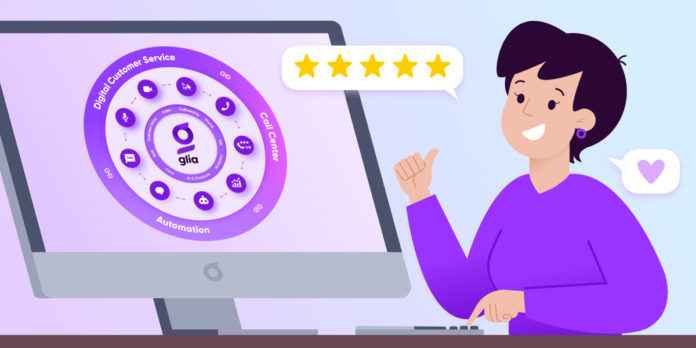Take This Test to See if Your Organization is Truly Customer- (or Member-) Centric
Does your organization’s digital customer engagement lean more toward a company-centric “channel-focused strategy” or are you moving in the direction of a more effective and customer-centric “interaction strategy.” Take the short test below to see where you land…
Test Questions (Part One)
- Did your company add digital features (like chat) some number of years after building a telephony-based service model?
- Does your organization have separate teams of people who interact with customers in different channels–some on the phone, some through chat, some through text, some through video, some through email, etc.?
- Is your call center plagued by an unnecessarily high number of calls from customers who COULD have resolved their issue without having to call on the phone?
If you said YES to 2 or all 3 of these–they’re “tells” that your organization likely fits the profile of the vast majority of companies that have (whether they knew it or not) adopted, over time, a channel-focused strategy.
The operative question in a Channel-Focused Strategy is:
What can we do as an organization to best manage our customer/prospect communication channels?
A channel-focused strategy tends to focus on the needs of the organization. What can WE do, to create the best results with all of these different—often disconnected—channels?
But now that it’s possible to manage all of your interactions through one ChannelLess® platform–regardless of which channel each customer chooses to contact you–organizations are enabled for the first time to optimize their strategy in a very different way.
Test Questions (Part Two)
Imagine being able to say YES to these:
- If a customer goes to your website with a question or issue that could easily be resolved through an interaction with a virtual assistant, are they automatically guided to the exact place/process to achieve whatever they need?
There are many issue types and needs that can be immediately resolved through automated interactions. The key is to know which and to create an effortless digital interaction for these specific types.
- Have you identified the ideal customer needs (based on issue types) that can be best served with OnScreen Voice interactions, and/or OnScreen Collaboration like CoBrowsing?
You can predict with high certainty which specific customer needs are matched with CoBrowsing experiences that improve mutual understanding and “teach” a customer how to become more digitally confident. That’s not the solution for all interactions, so you need to know which. This is now a “knowable” thing.
- When a call comes into your contact center–and the customer is calling from a smartphone–do your representatives ever suggest that the customer look at their screen so they can both be looking at the same thing?
When you identify the exact customer need types where conducting the interaction on the customers’ screen is better.–you can “shift the mix” of phone calls and digital interactions. This creates visible efficiency gains and measurable ROI. The goal should be to take control and to drive down total phone volume every year.
- Do you agree that it’s important to “meet the customer where they are?”
This is a trick question–because it’s not just about being able to connect with a customer through any channel they choose, but being able to seamlessly transition them to the best-fit interaction for the need they have at that moment. The channel isn’t the issue. The issue is the issue.
- Which of these is most important to you and your organization?
- Reducing costs and becoming more efficient
- Becoming more “digital” as an organization
- Driving higher revenue through new accounts and promos
- Increasing customer experience, NPS, or customer loyalty scores
- All of the above
Again, a trick question. These are all good answers. How your organization would answer is unique to you. But an Interaction Strategy enables each organization to predictably optimize the mix of live and virtual interactions to drive the measurable outcomes that matter most to your organization. Even if your answer is: e).
In an interaction strategy, the operating question is:
How can we automatically match the ideal interaction type with this customer, based on exactly what they need, to resolve the exact issue they are contacting you about–regardless of which channel they choose?
An Interaction Strategy starts with recognizing each customer’s need as they are contacting you (based on their “issue type”) and matching it to the best-fit interaction.
Not surprisingly, it’s way more efficient and immediately cost-effective when automated interactions are matched to the correct issue types. And some can be easily solved issues—instant responses to simple questions—creating effortless interactions.
However, other interactions require another person, and then there’s a choice between text, chat, OnScreen Voice and OnScreen Video. What we’ve been learning–different needs require different interaction types.
In an Interaction Strategy, companies determine the optimal “mix” of digital vs. phone interactions, begin matching certain issue types to corresponding interaction types, and start measuring the results.
Final Test Grade: Incomplete
You can’t be expected to be judged or evaluated on your organization’s Interaction Strategy, because it wasn’t even a possibility a few years ago. Or, for that matter, a necessity as it is now.
But as long as you know the “issue type” each customer is contacting you about, you can now predictably match their need to the best-fit interaction type. These are now knowable things. NOTE: If you would like to have a deeper discussion, we would be excited to show you the Interaction Needs Map and work with you to map the needs of your customers, in one of four categories of need.
You have the power to take control of all your company’ interactions, using a need-based strategy built around efficiently creating the best interaction for each customer:
The most efficient. The most effective. The best experience.
When organizations like yours started adding more channels a decade ago, they very likely gravitated toward operating in a more company-centric, channel-oriented way. Almost every company followed this common pathway. Because that was the only choice.
But now, there’s a different strategy that never existed before. One that is much better for your customers and even more beneficial to you and your organization. It’s nice to have choices.





